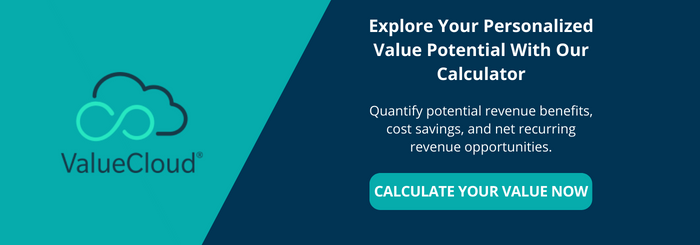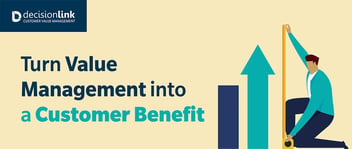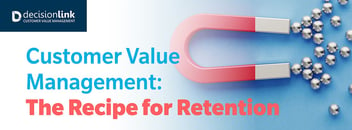In the World of SaaS, ROI must become an Ongoing Calculation

Peter O’Neill, Independent B2B Marketing Analyst
The concept of Software-as-a-Service (SaaS) has transformed the software industry. On the demand side, clients enjoy the new consumption model, with generally lower entry points, continual support in some cases, and a less capex-intensive approach overall. And the software/SaaS providers have learned that business success and profitable growth depends more as much on the full adoption of their solutions and renewals across their customer base as it does on winning net-new customers. So they invest heavily in Customer Success (in the form of onboarding and implementation services) and Customer Support resources to ensure customer satisfaction and maintain a strong renewal rate.
Buyers also have their financial metrics and most business purchase decisions, including software, must be supported by some sort of financial analysis and forecast, using financial instruments such as:
Return-on-Investment (ROI) — Total Cost of Ownership (TCO) — Internal Rate of Return (IRR) —
Payback Period — Net Present Value (NPV)
In response, many software vendors routinely offer one or more tools to establish value during their sales process – tools such as online ROI calculators or other spreadsheet templates. Or, they help buyers to develop their own business case, perhaps by providing data collected from their existing client base. This was so important in the traditional software sales process that the vast majority of vendors even deploy a supplemental consulting resource to collect data and advise on the topic.
The irony is though, in my experience, most sales conversations still dwell and stay focused on the price of a product or subscription instead of the value. This is due to some serious muscle memory on both sides of the purchase decision:
- A business culture of sales quotas and discount models instead of a customer-first, value-based selling approach
- A focus from buyers on the cost budget they must invest instead of the value they are creating.
The other issue with most vendors’ ROI tools is that they are primarily focused on the initial investment approval process and tend to produce a one-off report. But, collecting accurate data is quite difficult and so most of the ROI/TCO/IRR/NPV forecasts are some sort of estimate based upon many assumptions. Often, the document is completed on a pro-forma basis and not validated; and it is hardly ever audited at a later date on the actual outcomes of the project.
SaaS has also democratized software buying and many SaaS subscriptions are now signed up by individual contributors out of their expense budget – curiously, in these cases, IT or procurement only gets involved when the renewal phase is reached. But the SaaS spending honeymoon is likely ending. Chief Financial Officers are now turning their attention to these software expenditures and expect answers – answers in their taxonomy of return on investment, business outcomes, and revenue contribution.
Many SaaS providers tell me that the renewal negotiation has moved from a “shall we continue the project” discussion to an almost full-blown re-evaluation of the initial investment decision. Compliance guidance, or just good procurement management practice, is pushing buyers to evaluate a new shortlist in the renewal phase and each additional user group or functionality is treated as a brand new project.
The potential advantage for the current SaaS supplier is that they have, hopefully, provided a strong customer experience and that is well documented. Another is that the supplier is able to prove that their service has provided value to the organization:
- At the minimum, as measured against the forecasted benefits from the start of the project
- Ideally, based upon a continuous value management process.
I’ve known DecisionLink as a pioneer in the topic of customer value management for quite a while now, so I wasn’t surprised to hear they were interested in the above developments. They decided to find out how the SaaS industry is reacting to this new emphasis on ongoing value management and field a survey across numerous SaaS sales organizations. Then, they asked me to review and analyze the survey data and write up an insights report which you can see HERE.
I hope you will enjoy the report and that it helps in your planning; whether on the demand or supply side. It also discusses lessons learned in the SaaS that will be useful for all industries. Manufacturers of any type of goods can transform from a “product” orientation to a “solution” orientation by packaging up their “piece of hardware” and wrapping services, maintenance and support, upgrades, financing, monitoring, replenishment, and other value-add services to an otherwise commoditized piece of hardware. For example, original equipment manufacturers (OEMs) that produce tractors, airplane engines, and printers, are all delivering full solutions “as-a-service”.
If you would like to discuss this topic already, feel free to contact me.
Always keeping you informed! Peter.
peter@teamoneill.de , poneill@researchinaction.de , peter.oneill@b2bmarketing.net
Peter O‘Neill is an IT industry veteran with more than 39 years of experience in advising vendor and end-user clients and performing research-based consulting, combining strong research capabilities with comparative vendor assessments and actionable advice. He is most known for his 12 years of service at Forrester Research as an industry analyst and research director. Most recently Peter managed Forrester’s research on B2B Marketing organization, process, and automation topics, a worldwide team of 11 experienced analysts. Prior to his time at Forrester, Peter had worked for 20 years at Hewlett-Packard in Germany and the USA and then joined META Group (2001 – 2005) where he led the company’s Vendor Consulting Group across EMEA.

 ValueCloud
ValueCloud
.png?width=118&height=76&name=Rectangle%20(3).png) ValueCloud Ignite
ValueCloud Ignite
.png?width=92&height=92&name=Rectangle%20(4).png) Free Assessment
Free Assessment
.png?width=100&height=100&name=Rectangle%20(5).png) Watch a Demo
Watch a Demo
.png?width=82&height=96&name=Rectangle%20(6).png) Value Calculator
Value Calculator

.png?width=62&height=51&name=Group%2010%20(1).png) Marketing
Marketing
 Sales
Sales
 Customer Success
Customer Success
 Engage Prospects
Engage Prospects
 Win Deals Faster
Win Deals Faster
 Retain Customers
Retain Customers
.png?width=62&height=62&name=Rectangle%20(8).png) Adopt and Scale
Adopt and Scale
.png?width=54&height=54&name=Rectangle%20(9).png) Cybersecurity
Cybersecurity
 Healthcare
Healthcare
.png?width=54&height=54&name=Rectangle%20(10).png) IT & Software
IT & Software




